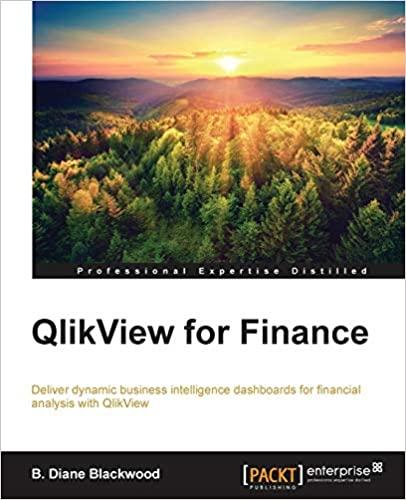Question
Case Study: Breakfast Hunch Sunshine in my Tummy Corp. manufactures and sells three major breakfast cereals: Fruity Crunch, Captain Shrapnel and Grandpas Granola. Fruity Crunch
Case Study: Breakfast Hunch
Sunshine in my Tummy Corp. manufactures and sells three major breakfast cereals: Fruity Crunch, Captain Shrapnel and Grandpas Granola. Fruity Crunch was first sold in 1966 and is the flagship product that made the company famous. The founder of the companys family loves Fruity Crunch and own 35% of the shares of the company. In 1987, the company introduced a new line cereal called Captain Shrapnel to compete with Captain Crunch. In 1998, the founders granddaughter wanted the company to offer a healthy alternative to the sugar laden products that made the company famous. The company introduced Grandpas Granola in the founders honor.
Due to a new law that will be implemented in five years, the company will have to close all of its existing plants. The company will, in five years, have to decide if it wants to reinvest in new plants or sell the brand to someone. Your responsibility is to determine how to maximize the value of the companys operations over the next five years.
Because of the company might discontinue operations in five years, the marketing budget etc. has been set so as to ensure that the same number of units will be sold over the next five years. This also means that no increases in the prices for any of the cereals is possible over the next five years; however, variable expenses are expected to increase with inflation which is estimated to be 3% a year for the next five years. The $15 million of fixed expenses are not expected to increase over the next five years. The Companys marginal tax rate is 20% and
the companys weighted cost of capital or opportunity cost or discount rate is 10%. The Company looks at a 5 year payback requirement, IRR, NPV and Profit Index to make decisions.
We have the following information from last year:
-
2 million units of Fruity Crunch were sold at an average price per unit of $4.00 and at a variable cost per unit of $3.50.
-
5 million units of Captain Shrapnel were sold at an average price per unit of $5.00 and at a variable cost per unit of $2.90.
-
1 million units of Grandpas Granola were sold at an average price per unit of $9.00 and at a variable cost per unit of $3.25.
Each cereal has an exclusive factory that only produces that product.
-
Last year, the Fruity Crunch factory was built for $5,000,000 with a 10 year linear amortization schedule. The factory can be sold at any time for 95% of book value.
-
Three years ago, the Captain Shrapnel factory was upgraded for $2,000,000 with a 7 year linear amortization schedule. The factory can be sold at any time for 125% of book value.
-
Four years ago, the new Grandpas Granola factory was built for $2,000,000 with a 7 year linear amortization schedule. The factory can be sold at any time for book value.
-
All three factories will be sold at the end of the five years. If the sale price for a factory is zero the factory will be donated to a charity for free but any tax savings due to the donation is expected to equal the cost of decommissioning the factory so donated factories will have no impact on cash flows.
Business Strategy 2: Something New?
Now that the founders granddaughter is no longer on the Board of Directors. You are exploring launching a new Cereal called Captain Chocolate. A $500,000 study was performed with the following results:
-
2.5 million units of Captain Chocolate are expected to be sold each year next five years at an average price per unit of $5.50 and a variable cost per unit of $3.00. Captain Chocolates price per unit and expense per unit will increase at the same rates of inflation as the rest of the cereals.
-
2 million units of Fruity Crunch sold last year would decrease by 25% this year and remain constant thereafter.
-
5 million units of Captain Shrapnel sold last year would decrease by 40% this year and remain constant thereafter.
-
1 million units of Grandpas Granola sold last year would increase by 5% this year and remain constant thereafter.
-
The cost of creating the marketing campaign for Captain Chocolate would be a one-time startup cost of $500,000.
-
The cost of the Captain Chocolate factory would be $4,000,000
-
Other start up costs associated with Captain Chocolate would be $1,000,000.
Would you recommend the Something New? business strategy? Why? Make sure to identify sunk costs in your write up.
Step by Step Solution
There are 3 Steps involved in it
Step: 1

Get Instant Access to Expert-Tailored Solutions
See step-by-step solutions with expert insights and AI powered tools for academic success
Step: 2

Step: 3

Ace Your Homework with AI
Get the answers you need in no time with our AI-driven, step-by-step assistance
Get Started


